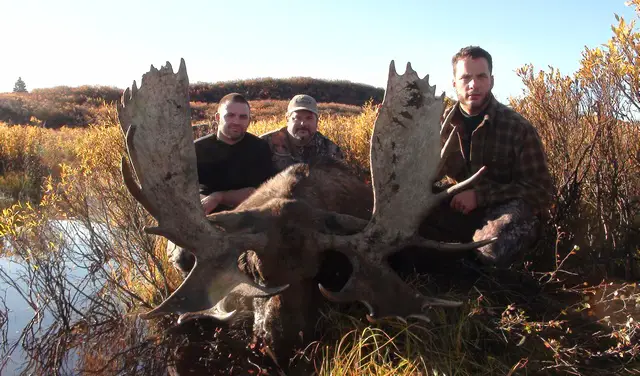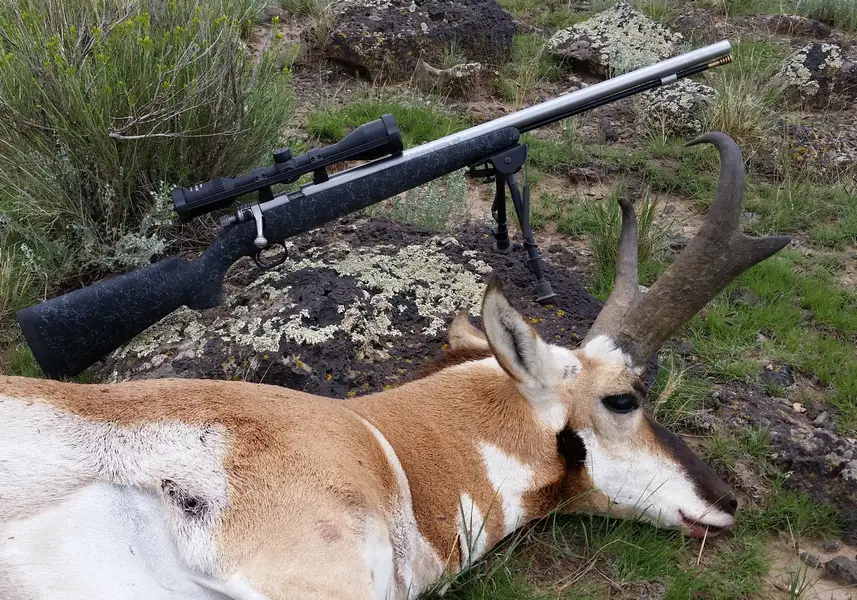


Parker Muzzleloading Bullets: 300 gr. Match/Hunter vs. 300 gr. Ballistic Extreme
The two most interesting muzzleloading projectiles of any consequence recently introduced are the Bob Parker 300 grain Match Hunter and the Bob Parker 300 grain Ballistic Extreme. The 300 grain Ballistic Extreme is the most recent Parker Production. I've been asked how many thousands of animals I've taken with that bullet and the answer is zero, as they didn't exist until a short while ago.

Teddy Berger of Cantril, Iowa and his friend Chad Hullander both just returned from a hugely successful Yukon muzzleloading moose hunt. Both used Parker 300 grain Ballistic Extremes pushed by 120 grains by volume of Blackhorn 209. One moose was taken at 230 yards, the other at 185 yards. Both were clean, one-shot kills. The moose were taken on consecutive days, through the same rifle.

I'll try to do a brief comparison of the Ballistic Extreme and the Match
Hunter. The 300 grain Match Hunter is the most aerodynamic .45 caliber
muzzleloading projectile available today, with a stated static ballistic
coefficient of .420. A very tough bullet as well, the Match Hunter has
a .028 thick jacket and is going to give you two holes, regardless of
game. Duane Dunham bagged his record book Kodiak Island brown bear, below,
with one 300 grain Match Hunter and it was a clean pass-through.

The 300 grain Ballistic Extreme has a thinner, .015 inch thick jacket, a static B.C. of .324, and sells for a few less pesos than the Match Hunter. With the thinner jacket, expansion is far more likely with the Ballistic Extreme, although expansion is relatively unimportant in larger bore applications.
The basic external ballistics, based on the published static ballistic coefficients and a 2000 fps muzzle velocity are as follows.

300 grain Parker Ballistic Extreme

300 grain Parker Match Hunter
Based on a six inch kill zone, sighted in three inches high at 100 yards, both loads are essentially 200 yard center of the body, hit the switch, and go pick him up whitetail loads. Actual trajectory from your rifle may very quite a bit, based on precise muzzle velocity, temperature, elevation, and scope height, etc. More of a factor at extended ranges than just drop is wind drift, which unless we are hunting at the airport can be hard to read. The combined advantages of the Match Hunter are less drop, less wind drift, and higher impact velocity assuming the same muzzle velocity.
Advantages of the Ballistic Extreme include lower cost, easier expansion / deformation on thin-skinned game, and the ability to load them without the special Spinjag, although the "Match Hunter" Spinjag can be used for both projectiles. Shot placement still beats whatever comes in second place, so the bullet that shoots the most consistently and accurately out of your individual rifle would be the logical choice for most applications.
9/15/2014 Addition:

A note to Bob Parker ...
Hi Bob!
Sorry for the delay, but here is the pronghorn I killed with your wonderful
bullet. He is just over 15" and would score 78-79. Knight Ultralight
.50 cal, Parker 300 grain Ballistic Extreme in front of 110 grains of
BH209, shot distance 278 yards.
I am VERY impressed with the accuracy and terminal performance of the
Parker Ballistic Extreme, and am really looking forward to using it on
elk next month! I
will be sure to report back after the hunt. Thanks
again Bob, your hard work and innovations are much appreciated!
Most Sincerely,
Adam Simms
Copyright 2012 by Randy Wakeman. All Rights Reserved.

Custom Search


